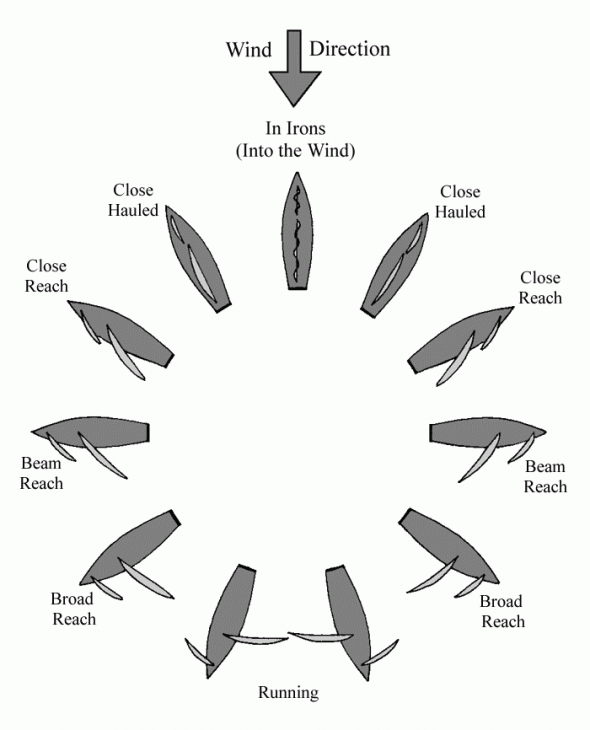I'll explain getting to upwind destinations next, but first we need to find out where we actually can sail. Imagine looking down at a sailboat from up in the air. There will be a big circle around the sailboat. At each point around this circle there is a point of sail, except directly into the wind and a given number of degrees around the wind direction depending on the boat. Boats that are meant for high performance will be able to sail "closer to the wind." Those that are considered boats for simple cursing will not be able to sail in the same directions. Sailing is all about angles and the angle that the wind is hitting the boat.
The first diagram simply shows where you can sail and where you cannot sail. Remember, the depicted "no sail zone" is always different. Different boats have different areas where they can and can't sail.
Now that we have determined where we can't sail, lets explore the area where we can sail. Each point of sail has a specific name. The name depends on the angle at which the wind is hitting the sails.
This is a diagram of the various points of sail. From this graphic, you can also see where the most efficient sail positions are relative to the wind. To the untrained eye, it would look like "running" is would be the fastest point of sail. Actually, a beam reach is the fastest point of sail.
This is a diagram of the various points of sail. From this graphic, you can also see where the most efficient sail positions are relative to the wind. To the untrained eye, it would look like "running" is would be the fastest point of sail. Actually, a beam reach is the fastest point of sail.


No comments:
Post a Comment